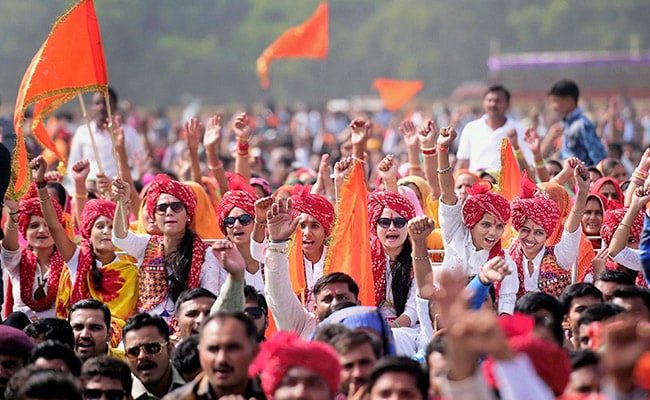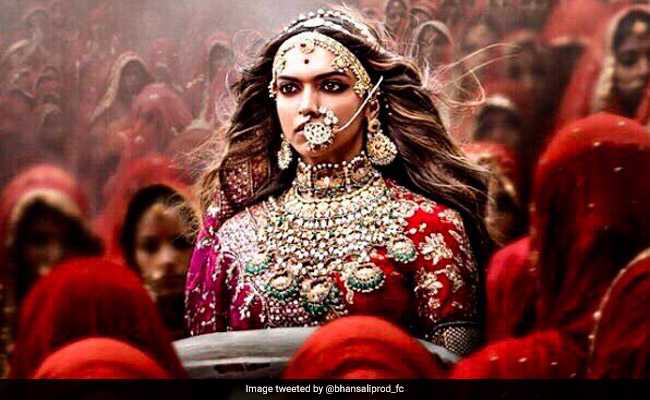Last Monday, Madhya Pradesh Chief Minister Shivraj Singh Chouhan, not usually given to rabble rousing, announced the film would not be shown in his state even if it gets Censor Board clearance. Except for some film industry voices, none have come forward to defend Bhansali's right to produce a work of art.
In India's volatile society, demands for banning literature and art are common. If something is perceived to be offensive to a community, tempers flare and the concept of artistic or poetic license is rejected out of hand. Arguably, some practitioners of art push the envelop a little too far as celebrated painter M.F. Husain did with his nude paintings of Goddesses Durga and Saraswati. This caused widespread revulsion not only among hardliners but even moderate Hindus who felt that the paintings were a deliberate affront to their faith. Many queried if Husain would have dared paint his Prophet in a comparable manner.
The one writer who did portray Prophet Muhammad in unflattering light, still carries a fatwa on his head. Salman Rushdie's The Satanic Verses faced such universal condemnation that Rajiv Gandhi's government was compelled to ban it in India. Earlier, Indira Gandhi was forced to ban a poorly made slapstick comedy film "Badhti ka Naam Dadhi" as it was claimed to offend Sikh sentiment, just as a Madras masala film "Lok Parlok" was proscribed for allegedly denigrating Hindu gods and goddesses in 1979.

Large protests against the movie "Padmavati", have been staged in Rajasthan, Maharashtra and some other states
In the case of "Padmavati", however, the film apparently has been shown only to select TV anchors who have happily issued endorsement certificates to its content. Ironically, however, the film is yet to receive clearance from the Censor Board whose chief has sharply criticised the selective screening.
The issue here is not about the content of the film which deals with the mass suicide led by Rani Padmini of Chittorgarh in the face of the siege by troops of Delhi's then Muslim ruler Alauddin Khilji. School textbooks, at least those in vogue till the 1960s, narrated in graphic detail about how Khilji was besotted by the beauty of the princess and insisted on marrying her especially after he saw her reflection in a mirror. Faced with impending dishonour at the hands of a rogue army of invaders, Padmini or Padmavati jumped into a well with a large group of consorts in the Chittorgarh Fort and committed collective suicide or jauhar by setting themselves on fire.
The story is based largely on a poem penned by Malik Muhammad Jayasi many years after the alleged incident. Most historians doubt the veracity of Jayasi's narrative and there are virtually no proven accounts of this story. But it is indelibly etched in Rajput memory and has been narrated by itinerant bards and later by tourist guides for centuries.

The film "Padmavati" may not be released until next year
This may sound offensive in a democracy but historical characters are so divisive in India that prudence demands not making high-profile films on such contentious subjects. Especially on a subject involving a Hindu and a Muslim, feelings run deep and reopen wounds otherwise buried in collective historical psyche. Bhansali could have been better advised not to touch a subject as sensitive as this and to that extent he should have anticipated the groundswell of protest that has erupted.
The question therefore is not whether "Padmavati" should be banned but whether it should have been made in the first place. India, unlike the West, is yet to become a stable society where artistic freedom reigns untrammelled. The religious faultline between Hindus and Muslims runs deep and has got exacerbated in recent decades. Communal riots take place routinely over trivial issues resulting in many deaths and injuries. Although the content of "Padmavati", from all accounts, may not in reality turn out to be offensive to the aggrieved community concerned, but an objective judgement on the merits of the celluloid depiction of the purported historical tale is unlikely.
For example, is an objective depiction of the civil strife over the Partition of India really possible? Several films have been attempted but they have been accused of bias one way or the other. There are other contentious issues from India's chequered history that may never see objective artistic portrayal. When history books are the subject of so much controversy with the nationalists and Marxists ranged bitterly against each other, popular folklore such as the story of Rani Padmavati cannot be expected to be free of contention.
Only a stable and mature society whose faultlines have been erased over time can deal with issues such as the communal divide. Till that time, narratives involving Hindu and Muslim protagonists are ideally kept inside the closets of history. They are best not brought into public light, for these have incendiary potential and social cohesion can be easily disrupted when artistic imagination is employed to embellish tales that have no authentic accounts on which they can be based.
(Dr. Chandan Mitra is a journalist, currently Editor of The Pioneer Group of Publications. He is also former BJP MP, Rajya Sabha.)
Disclaimer: The opinions expressed within this article are the personal opinions of the author. The facts and opinions appearing in the article do not reflect the views of NDTV and NDTV does not assume any responsibility or liability for the same.


